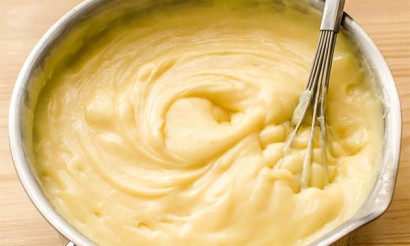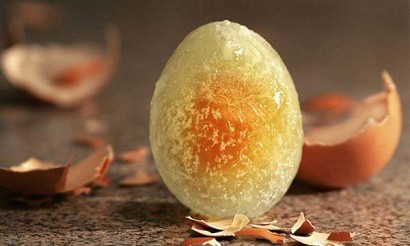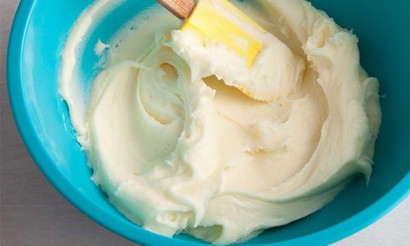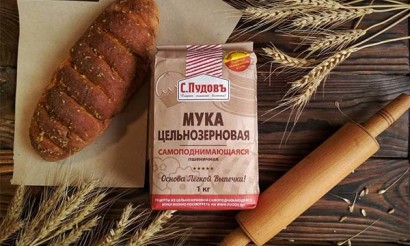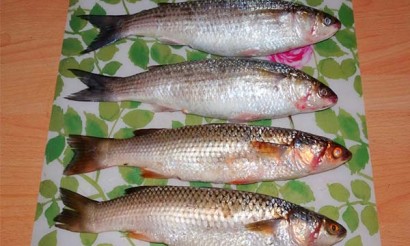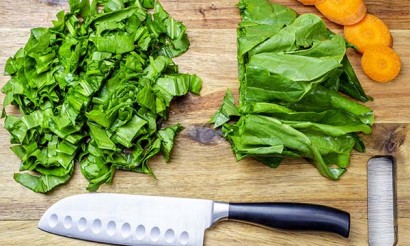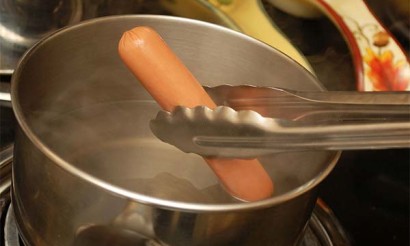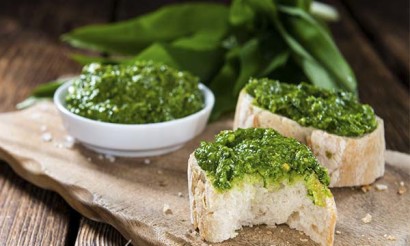How to clean pine nuts: 5 ways
Pine nuts are a very tasty and, more importantly, useful product, which has found wide application not only in cooking, but also in cosmetology and in folk medicine. They are used to treat infectious diseases, atherosclerosis, allergic reactions, as well as to strengthen the immune system. There is only one problem - pine nuts are very difficult to peel from the shell. But in general, it is quite possible at home and even without the use of special equipment.
- What are pine nuts and why are they useful
- What is better: ready-made nuts or home cleaning
- How to get pine nuts from the cone
- How to peel pine nuts from the husk
- How to peel pine nuts from the shells
- Soaking in hot water
- Cleaning after freezer
- Heating in a pan or oven
- Temperature change
- Cleaning with improvised implements
- Storing the peeled pine nuts
What are pine nuts and why are they useful?
Pine nuts are actually the seeds of pine pine trees. They are incredibly useful due to their chemical composition:
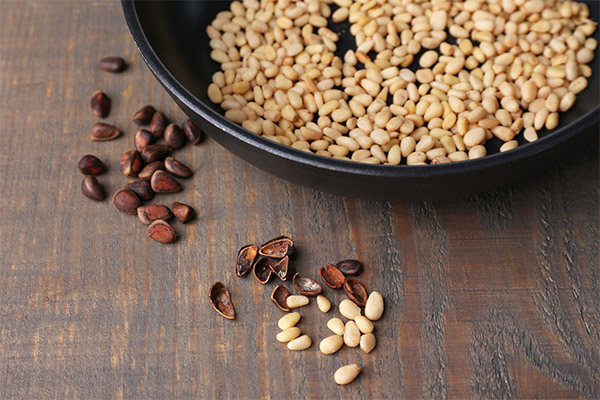
- Vitamins A and E, which are strong antioxidants that have anti-inflammatory properties.
- Ascorbic acid, which helps maintain the natural immune system and is beneficial to the vascular system.
- B vitamins, which are responsible for normal CNS and metabolic processes.
- Polyunsaturated fatty acids, the use of which helps to regulate blood cholesterol levels.
- Fibre, which helps to improve digestion.
- Essential amino acids, which are responsible for the most important biochemical processes in the body. Because of their presence pine nuts are recommended for vegetarians, as they help compensate for the lack of animal proteins and the body absorbs them better than other sources of protein.
- Macro- and micronutrients involved in the processes of blood circulation, transmission of nerve impulses, etc.
Thus, the benefits of pine nuts for the body are difficult to overestimate. However, it should be remembered that it is a very caloric product. Its energy value is 300 kcal per 50 g. And you can eat no more than 30 grams of seeds a day, otherwise the starch, glucose and fats they contain will start to accumulate on the waist and hips.
From pine nuts make oil, which is widely used in folk medicine and cosmetology. It is believed that it helps cure eczema and psoriasis (although it would be more correct to say to remove their main signs), to cope with dry skin, remove toxins, normalize the liver and gastrointestinal organs. Use cedar oil is advised to strengthen the nervous system, the prevention of anemia and vitamin deficiency.
After pressing the oil there is also a very useful oil cake. It contains the same elements as the kernels themselves, even in an increased concentration. This by-product allows the metabolism, it is often added to various confectionery products. The oil cake is also used as a remedy for diathesis and inflammatory skin diseases. It is believed that such baths give a soothing effect in the presence of nervous agitation.
Even the shells of pine nuts are useful. From it are prepared tinctures and healing decoctions, which are used to heal the mucous membranes and skin in inflammatory diseases. But in order to get the oil, shells and cake, you must first peel the nuts. And it must be done according to all the rules, so they do not lose their therapeutic properties.
What is better: ready-made nuts or homemade peeling
In the industry, special vacuum crushers are used for cleaning pine nuts. On the one hand, such equipment allows to preserve the shape of the kernels. On the other hand, with this method the nuts themselves do not lose their dietary and medicinal properties. However, the purchase of peeled pine nuts has a serious disadvantage - such a product does not keep for a long time. Even if they are stored correctly, in the refrigerator, the maximum period is not longer than a month. And how they were stored before they hit the store shelves is unknown to the buyer. Not to mention that there is always the risk of buying a product that is not certified.
At the same time, the self-cleaning of pine nuts avoids the risk of spoiling the product. You only need to choose fresh kernels, take care that they are not spoiled or rancid. Therefore, you should buy only nuts with a clean and smooth shell and without an unpleasant smell.
Unpeeled nuts can be stored normally for half a year. You should peel them just before eating them.
How to get pine nuts from a cone
Sometimes pine nuts are brought in their natural "package", that is, in cones. Therefore, to begin with, you need to solve another problem by extracting the seeds from there. Some people think that they will have to fork them out, but this only happens with immature nuts. Since these are seeds, the plant wants to spread them over as large an area as possible, so they should fall out of the cones easily.
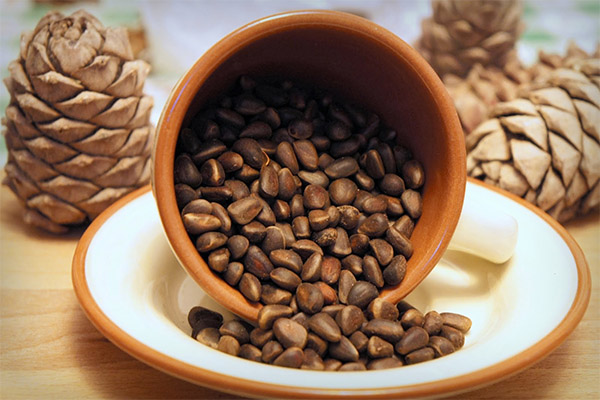
But still deal with them only in protective gloves. The fact is that the cones can have resin on them, and it often causes irritation, and it is long and tedious to wash it off. A normal rubberized household glove is enough to provide protection.
So, in theory, the mature seeds should fall out of the cone by themselves, but you can speed up this process. To do this, it is enough to rub the cone or at least slightly twist it in your hands. You should immediately prepare two containers. The nuts will go in one of them, and the husk will go in the second one. When twisting, the cone is held over the container which is designed for the husk. The nuts will be extracted from it later. You can also tap the cone lightly on the edge of the container, and the seeds themselves will fall down. It is possible to put a cone on a wooden board and lightly beat it with a hammer. This process is in any case not quick, given that everything is done manually. Theoretically, it takes an hour to fill a container designed for 2.5 liters.
If during the extraction of the seeds the resin still got on the skin, then to remove it more easily, you need to use a greasy cream or ordinary sunflower oil.
Interestingly, in places where cedar pine grows, the so-called "cones" have long invented means of mechanization, which allow you to quickly and with less labor to extract the nuts. These devices are called peelers and crushers.
The simplest option is considered to be a ruler, which is shaped a bit like an antique washboard. A cone is placed on its lower ribbed part, and something like a lid is pressed on top, also with a wavy surface, only it is equipped with a handle. And then, using the lid, the cone is moved along the entire board. Passing between the relief planes, the cone loses its seeds quite quickly.
Professionals have even more sophisticated devices, already resembling mills, equipped with ribbed rollers. But if a person collects cones in nature, he does not have the opportunity to use any equipment. In such a case, experienced conesmen advise to make a fire and put cones in the flame - like potatoes in baking. The fire quickly burns off the resin, and the seeds are easily shaken out by hand.
If you have a large cauldron, you can boil the cones in boiling water, which makes the resin wash out perfectly. This will also soften the nut shell, and the kernels will be easier to separate.
How to peel pine nuts from the husks
- The easiest way to help separate the nuts from the husks at home is to sift through a sieve. Only it is necessary to take two devices - one with a mesh diameter of 6-7 mm, and the second - 3 mm. First you sift the crop through a coarse sieve, then - through a fine sieve. Of course, some amount of debris will still remain, but it will already be non-critical.
- The second method is cleaning with water. In this case, and the husk will be removed, and you can immediately wash the nuts. You need to take a basin or any other container suitable in depth and fill it with water. The nuts are poured on the bottom, and almost immediately the husk floats away so that it can be easily drained. However, the pine seeds need to be dried afterwards, because they are designed for long-term storage.
- The third method is used only when it is possible to leave the nuts in the open air. On the ground in such a case, a tarpaulin or polyethylene film is spread out. One edge of the material is lifted so that an inclined wall is formed. On this surface, using a scoop, pine nuts are poured from a large distance of 4-5 meters. The light husks simply do not reach the spread tarpaulin. The disadvantage of this method is that there is a lot of cleaning after it. But for a large number of nuts it is the only one that is suitable.
How to clean pine nuts from the shells
Existing folk methods are not designed to be able to quickly clean a large number of kernels. At home, this is not necessary, since they do not keep for a long time.
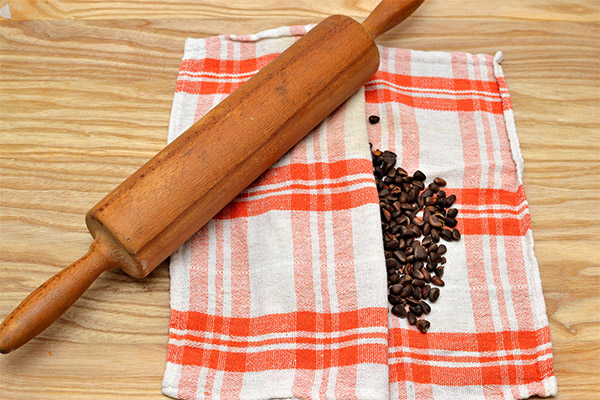
It should be noted at once that the traditional way of cleaning pine nuts in modern conditions does not work. The fact is that in the old days they were chewed with their teeth. But this way you can traumatize the mucous membrane of the oral cavity or even break your teeth, and the services of a dentist today are expensive.
If there are still lovers of the extreme, they should remember that in this case you have to act according to the rules. Nuts are snapped only crosswise, taking into account that the most vulnerable place of the shell is approximately in the middle of the seed. It is convenient to take the nut itself with your fingers by the sharp tip. To reduce the risk of injury, it is better to soften the shell first, putting the seeds in hot water for 10-15 minutes. Bite the nuts should not be a sharp movement, but smoothly. Perhaps then you won't have to go to the dentist, but it's better not to risk it.
The following are the main ways to clean the nuts from the shells:
- Soaking in room temperature water to soften the shells.
- Pouring in boiling water for 5-10 minutes.
- Pre-freezing in the freezer, which also makes the shells more brittle.
- Heating in a frying pan without deep frying.
Mechanical action is also practiced, in which the shell is broken with heavy objects.
Soaking in hot water
You need to leave the nuts in hot water (but not boiling water) for at least 12 hours (preferably 24 hours). Then spread them out on a sturdy cutting board in a single layer and cover with a towel or a plastic bag. After that, carefully, so as not to crush the kernels, go over the nuts with a rolling pin. This method is effective, but it requires experience and skill. The disadvantage of this method is also that the taste of water-treated kernels changes not for the better.
Cleaning after the freezer
Frozen shells quickly become brittle. More often than not, simply leaving the cedar seeds in the freezer in a plastic bag for a few hours is enough to achieve this effect. Subsequently, you need to take them out and, without taking them out of the bag, go over them with a rolling pin. But you just need to try and not apply too much force, because you can destroy not only the shells, but also their contents.
In this case, it is better to organize batch storage in the freezer, taking out as many nuts as you need each time. The fact is that if they defrost, you can't put them back in the freezer.
Heating in a pan or oven
This method is also designed for thermal action, and it involves only high temperatures. Pine nuts should be placed in a dry frying pan, distributed in an even layer and heated for 15-20 minutes, stirring constantly. But you will be able to crack the nuts only after they have cooled. After heating, the shells will become more brittle in any case.
If the harvest is large, it is more convenient to heat it in the oven, having poured it in advance on a dry baking tray and distributing it in an even layer. Heat the oven to no more than 100-120 degrees, keep the cedar seeds there literally 15-20 minutes. The hostess is not even required to do anything, often the shell itself gives cracks, after which it can be literally crushed with the fingers.
Temperature changes
It is possible to soften the shell under the influence of temperature differences, when not simultaneously, but literally one after another, it is affected first by heating and then by cooling. For example, you can heat the cedar seeds in a frying pan, and then quickly pour them into very cold water. After that, getting rid of the shells will be quite easy. However, you need to remember that it is impossible to strongly heat the nuts, otherwise they will lose their healing properties.
However, even without additional heating by soaking in cold water you can achieve the same result. But in this case, the softening of the shells will take a long time - almost a day.
Cleaning with improvised devices
As with other nuts, heavy metal or wooden objects can be used for the cedar seeds, not necessarily kitchen utensils. It can be a garlic press, pliers or a rolling pin. You can break the shells with a hammer. The problem is that these seeds are very small, and such cleaning will take a long time. And you should be very careful with a hammer.
By the way, these methods can be combined. For example, you should first soak the nuts in hot water, and then use a rolling pin or pliers.
Storing peeled pine nuts
As already mentioned, these kernels contain quite a lot of oil, sometimes up to 65%. That's why you can't store them for long. If the hostess wants to buy nuts for long-term storage, you should buy them only after they are harvested in September-October. It is worth asking the seller for one kernel to try. It should have a pleasantly sweet taste.
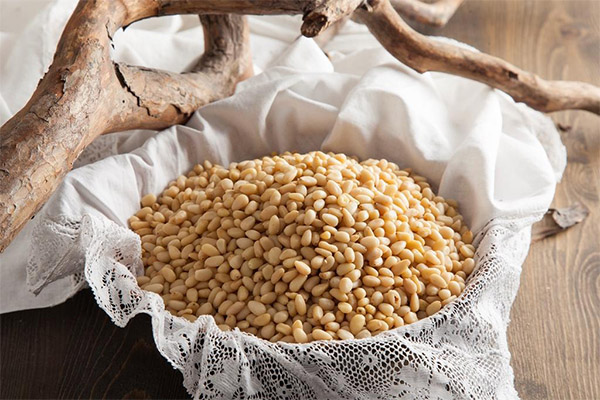
When the hostess peels the desired number of kernels, they should be poured into a plastic bag and placed on the shelf of the refrigerator. If the nuts will be used within just a few days after cleaning, you can pour them into a glass jar with a tightly screwed lid and put it on a shelf of a cabinet with solid doors, so that the sunlight does not fall on it. But after some time, even if the nuts do not go bad, they will lose flavor. So you need to add them to salads or baked goods right away.
«Important: All information on this site is provided for informational purposes only. purposes. Before applying any recommendations, consult a health care professional. specialist. Neither the editors nor the authors shall be held liable for any possible harm caused by materials."

